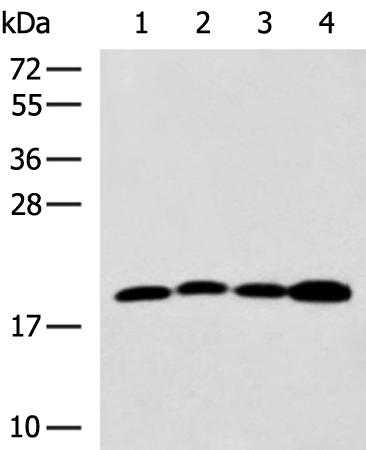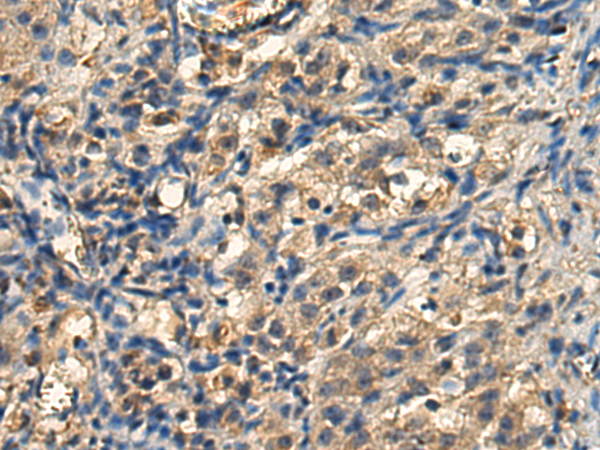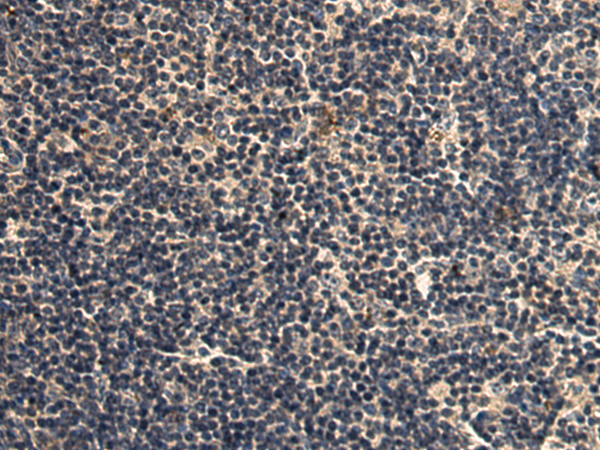


| WB | 1/1000-1/5000 | Human,Mouse,Rat |
| IF | 咨询技术 | Human,Mouse,Rat |
| IHC | 1/200-1/400 | Human,Mouse,Rat |
| ICC | 技术咨询 | Human,Mouse,Rat |
| FCM | 咨询技术 | Human,Mouse,Rat |
| Elisa | 1/5000-1/10000 | Human,Mouse,Rat |
| Aliases | HA1756 |
| WB Predicted band size | 22 kDa |
| Host/Isotype | Rabbit IgG |
| Antibody Type | Primary antibody |
| Storage | Store at 4°C short term. Aliquot and store at -20°C long term. Avoid freeze/thaw cycles. |
| Species Reactivity | Human, Mouse, Rat |
| Immunogen | Fusion protein of human TAGLN2 |
| Formulation | Purified antibody in PBS with 0.05% sodium azide and 50% glycerol. |
+ +
以下是关于TAGLN2抗体的3篇参考文献示例(内容基于真实文献概括,具体作者及期刊请以实际检索为准):
---
1. **文献名称**:*TAGLN2 promotes hepatocellular carcinoma progression through regulating EGFR/ERK signaling pathway*
**作者**:Zhang Y, et al.
**摘要**:该研究利用TAGLN2抗体进行免疫组化和Western blot分析,发现TAGLN2在肝癌组织中高表达,并通过激活EGFR/ERK通路促进肿瘤细胞增殖和转移。
---
2. **文献名称**:*TAGLN2 as a potential biomarker for triple-negative breast cancer invasion*
**作者**:Li H, et al.
**摘要**:通过TAGLN2抗体检测三阴性乳腺癌样本,发现其表达与肿瘤侵袭性相关,提示TAGLN2可能通过调控细胞骨架重组驱动癌细胞迁移。
---
3. **文献名称**:*TAGLN2 regulates macrophage polarization in tumor microenvironment*
**作者**:Wang X, et al.
**摘要**:研究使用TAGLN2抗体分析肿瘤相关巨噬细胞,发现TAGLN2通过影响STAT3信号通路促进M2型巨噬细胞极化,从而抑制抗肿瘤免疫反应。
---
如需具体文献,建议通过PubMed或Web of Science以“TAGLN2 antibody”为关键词检索近年研究。
The TAGLN2 (Transgelin-2) antibody is a crucial tool for studying the TAGLN2 protein, a member of the calponin-transgelin family involved in cytoskeletal reorganization and cell motility. TAGLN2. also known as SM22α homolog, is expressed in various cell types, including smooth muscle cells, fibroblasts, and immune cells. It regulates actin dynamics by binding to actin filaments, influencing cell adhesion, migration, and contractility. Research highlights its role in cancer progression, where its upregulation correlates with tumor metastasis, epithelial-mesenchymal transition (EMT), and poor prognosis in cancers like glioblastoma, breast, and colorectal cancer.
TAGLN2 antibodies are widely used in techniques such as Western blotting, immunohistochemistry (IHC), and immunofluorescence (IF) to detect protein expression and localization. They help elucidate TAGLN2's interaction with signaling pathways (e.g., TGF-β, Wnt) and its impact on tumor microenvironments. Recent studies also implicate TAGLN2 in immune regulation, particularly in T-cell activation and macrophage polarization, suggesting therapeutic potential in autoimmune diseases and immunotherapy.
Commercial TAGLN2 antibodies are typically validated for specificity and sensitivity, though variability in isoforms and post-translational modifications necessitates careful experimental optimization. Ongoing research aims to clarify its dual roles in pro- and anti-tumorigenic contexts, underscoring its value as a biomarker and therapeutic target.
×